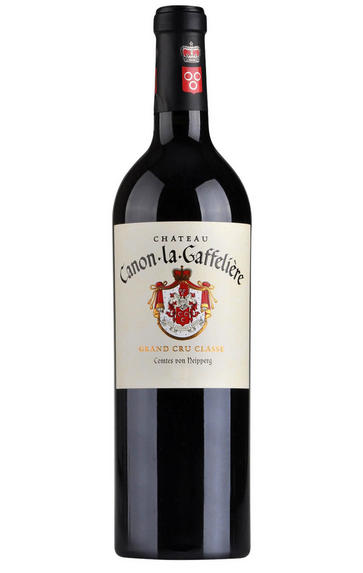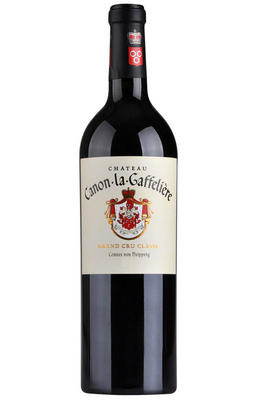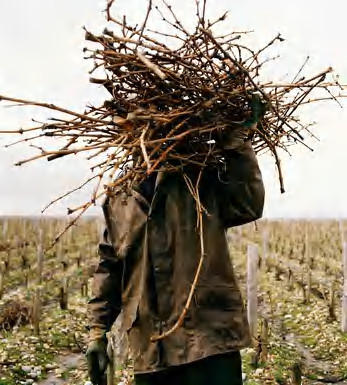
2015 Château Canon-la-Gaffelière, St Emilion, Bordeaux

Critics reviews
Lisa Perrotti-Brown - 21/02/2018
About this WINE

Château Canon-la-Gaffeliere
Château Canon-la-Gaffelière is owned by Comte von Neipperg. Located in the centre of the St.Emilion appellation, due south of St.Emilion town, the property has a similar climate to that enjoyed by both St.Emilion and Pomerol: more continental than the maritime Médoc, with generally more spring rainfall, though less in summer and winter.
Canon-la-Gaffelière's 19.5 hectares of vineyards (Merlot 55%, Cabernet Franc 40%, Cabernet Sauvignon 5%) lie at the base of the`Côtes', on relatively flat, sandy-gravel topsoil and sandy-clay subsoil.
Vinification at Canon-la-Gaffelière is traditional: up to 4 weeks in temperature-controlled-wooden vats followed by up to 18 months' maturation in oak barrels, 50% new. It is classified as a Grand Cru Classé.

St Émilion
St Émilion is one of Bordeaux's largest producing appellations, producing more wine than Listrac, Moulis, St Estèphe, Pauillac, St Julien and Margaux put together. St Emilion has been producing wine for longer than the Médoc but its lack of accessibility to Bordeaux's port and market-restricted exports to mainland Europe meant the region initially did not enjoy the commercial success that funded the great châteaux of the Left Bank.
St Émilion itself is the prettiest of Bordeaux's wine towns, perched on top of the steep limestone slopes upon which many of the region's finest vineyards are situated. However, more than half of the appellation's vineyards lie on the plain between the town and the Dordogne River on sandy, alluvial soils with a sprinkling of gravel.
Further diversity is added by a small, complex gravel bed to the north-east of the region on the border with Pomerol. Atypically for St Émilion, this allows Cabernet Franc and, to a lesser extent, Cabernet Sauvignon to prosper and defines the personality of the great wines such as Ch. Cheval Blanc.
In the early 1990s there was an explosion of experimentation and evolution, leading to the rise of the garagistes, producers of deeply-concentrated wines made in very small quantities and offered at high prices. The appellation is also surrounded by four satellite appellations, Montagne, Lussac, Puisseguin and St. Georges, which enjoy a family similarity but not the complexity of the best wines.
St Émilion was first officially classified in 1954, and is the most meritocratic classification system in Bordeaux, as it is regularly amended. The most recent revision of the classification was in 2012

Cabernet Sauvignon Blend
Cabernet Sauvignon lends itself particularly well in blends with Merlot. This is actually the archetypal Bordeaux blend, though in different proportions in the sub-regions and sometimes topped up with Cabernet Franc, Malbec, and Petit Verdot.
In the Médoc and Graves the percentage of Cabernet Sauvignon in the blend can range from 95% (Mouton-Rothschild) to as low as 40%. It is particularly suited to the dry, warm, free- draining, gravel-rich soils and is responsible for the redolent cassis characteristics as well as the depth of colour, tannic structure and pronounced acidity of Médoc wines. However 100% Cabernet Sauvignon wines can be slightly hollow-tasting in the middle palate and Merlot with its generous, fleshy fruit flavours acts as a perfect foil by filling in this cavity.
In St-Emilion and Pomerol, the blends are Merlot dominated as Cabernet Sauvignon can struggle to ripen there - when it is included, it adds structure and body to the wine. Sassicaia is the most famous Bordeaux blend in Italy and has spawned many imitations, whereby the blend is now firmly established in the New World and particularly in California and Australia.


Buying options
Add to wishlist
Description
Saturated but not impenetrable colour, with a plum note on the nose allied to some coolness and blackcurrant. There is a high percentage of both Cabernets here – 38% Cabernet Franc and 7% Cabernet Sauvignon – which add structure and freshness to the richer Merlot red fruit and makes you think of Figeac. Fine tannins and medium body show that this isn’t overworked, a trait often seen in the past with St. Emilion. This is right up there with the 2009 and 2010. Give it a decade in the cellar and this will be highly rewarding.
wine at a glance
Delivery and quality guarantee